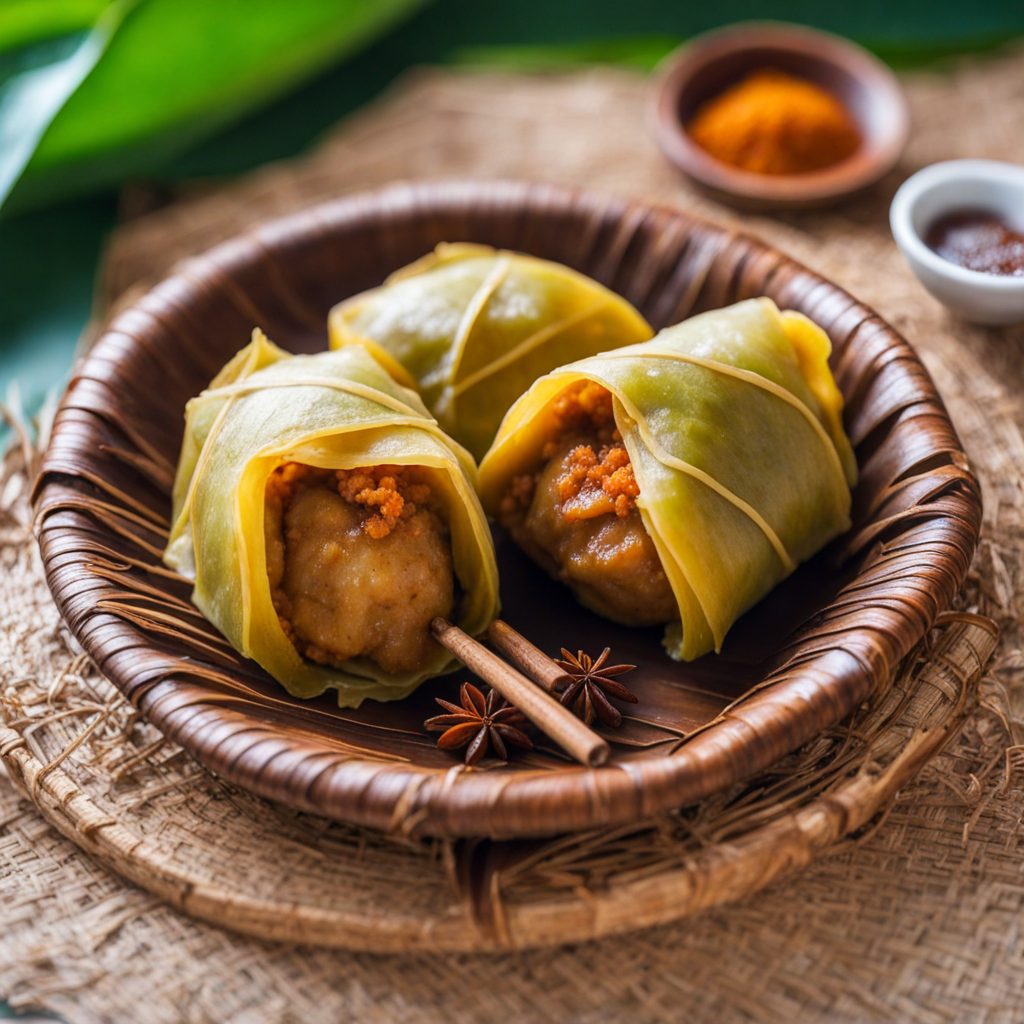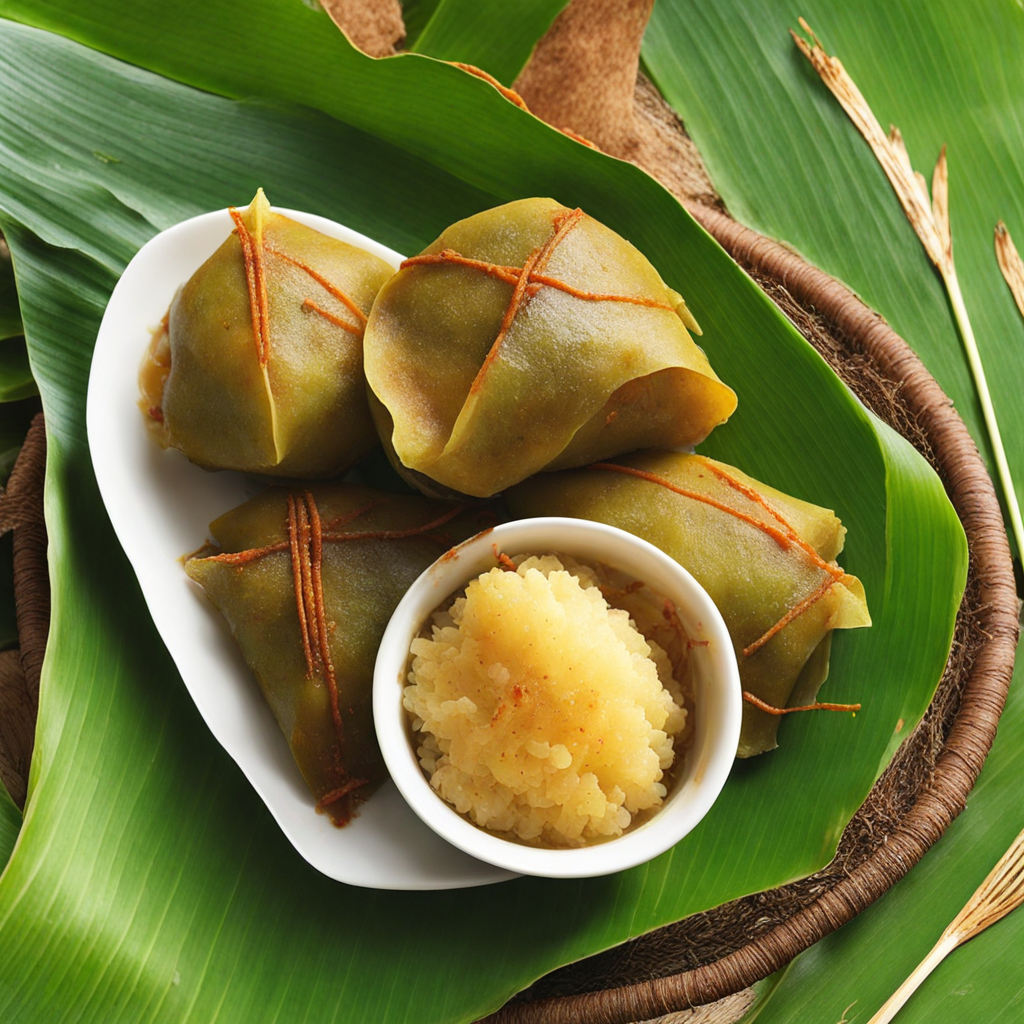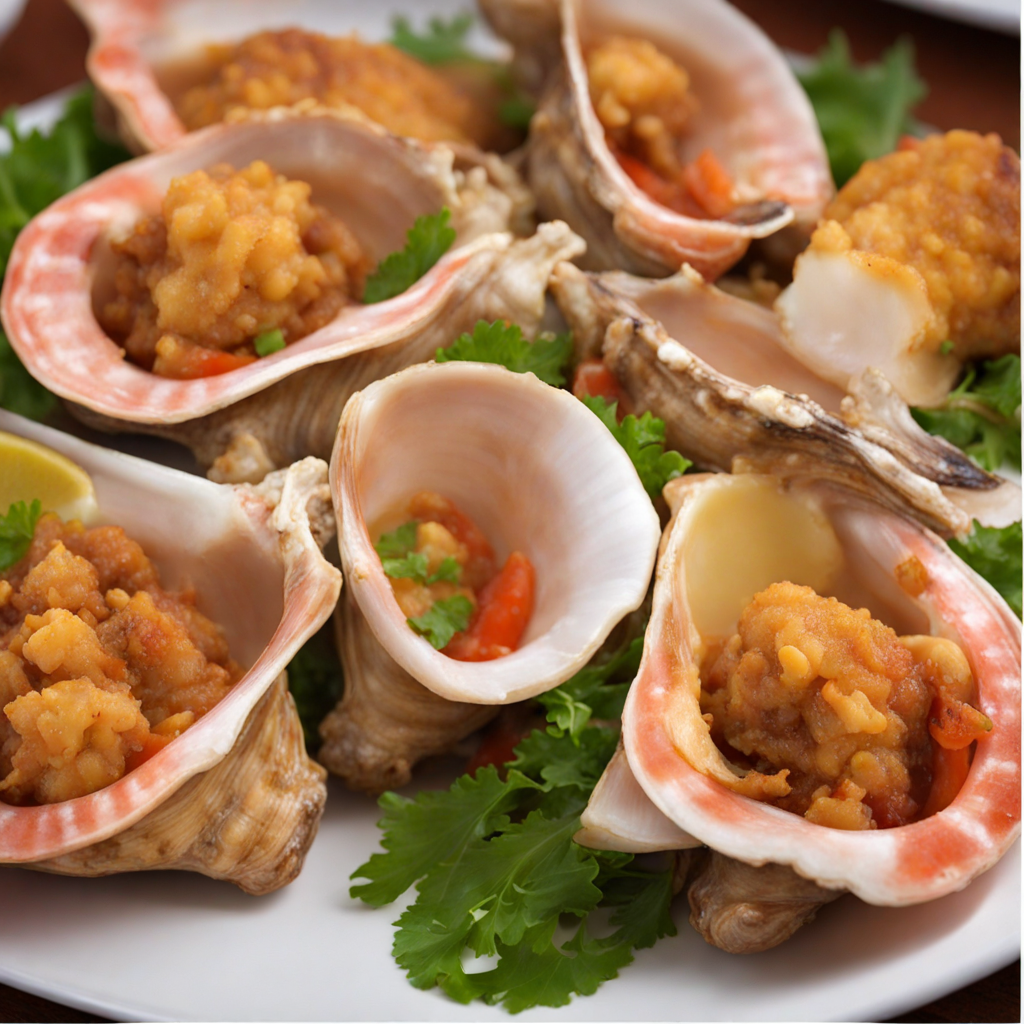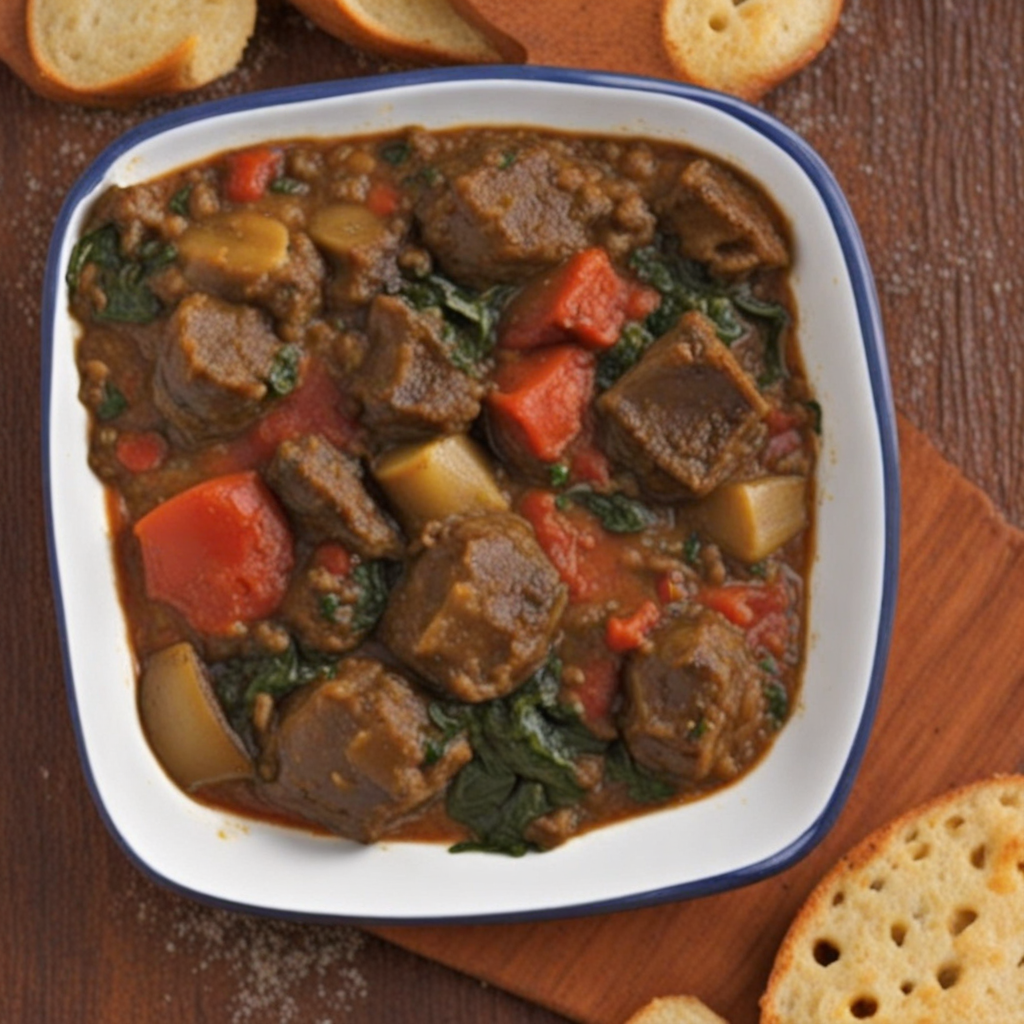Ducana
Ducana is a traditional dish from Antigua and Barbuda that showcases the rich cultural heritage and culinary traditions of the Caribbean. This delightful dish is primarily made from grated sweet potatoes, which are combined with flour, coconut milk, and a blend of spices, creating a mixture that is both sweet and savory. The sweet potatoes lend a naturally sweet flavor, while the coconut milk adds a creamy texture that enhances the overall taste experience. This unique combination makes Ducana a delightful treat, appealing to those who appreciate the balance of flavors in their meals. The preparation of Ducana is as vibrant as its taste. The mixture is wrapped in banana leaves, which impart a subtle earthy aroma during the steaming process. As it cooks, the flavors meld together, resulting in a moist, dense pudding-like consistency. The steaming method not only cooks the Ducana evenly but also preserves the natural sweetness of the sweet potatoes, allowing them to shine. Once unwrapped, Ducana is often served alongside a variety of savory dishes, such as saltfish or stewed meats, providing a perfect contrast to the dish's sweetness. What truly sets Ducana apart is its versatility; it can be enjoyed as a side dish or a standalone meal, and it is often featured during special occasions and celebrations in Antigua and Barbuda. The dish embodies the spirit of Caribbean cooking, where local ingredients and traditional techniques come together to create something truly special. Whether you’re a seasoned traveler or a culinary enthusiast, discovering Ducana offers a unique opportunity to savor the flavors of Antigua and Barbuda, leaving you with a memorable taste of the islands.
How It Became This Dish
Origin of Ducana Ducana is a traditional dish hailing from the twin-island nation of Antigua and Barbuda, situated in the Caribbean. Its origins can be traced back to the indigenous peoples of the region, as well as the influences brought by African slaves during the colonial period. The dish is a testament to the melding of different cultures and culinary practices. The name "ducana" is believed to derive from the Arawakan word for "dumpling," which underscores its roots in the indigenous culinary tradition. The core ingredients of ducana consist of sweet potatoes, coconut, and spices, making it a staple food that is both nourishing and flavorful. The use of sweet potatoes, which are native to the Americas, highlights the agricultural practices of both the indigenous peoples and later settlers. The introduction of coconut, a tropical fruit, reflects the influence of African cooking methods, as coconuts were widely used in various regional cuisines across West Africa. \n Cultural Significance Ducana holds a special place in the culinary landscape of Antigua and Barbuda, often associated with celebrations and communal gatherings. It is commonly prepared during significant events, such as weddings, national holidays, and family reunions. The dish embodies the spirit of sharing and togetherness, as families often come together to prepare ducana in large quantities, turning the cooking process into a social event. In addition to its communal significance, ducana also carries cultural symbolism. It represents resilience and the blending of different cultural influences in the Caribbean. The dish serves as a reminder of the struggles and triumphs of the ancestors who were brought to the islands as slaves, and their ability to adapt and create new culinary traditions from the ingredients available to them. \n Preparation and Ingredients The preparation of ducana involves a few straightforward steps, yet the process is steeped in tradition. The primary ingredient, grated sweet potato, is mixed with coconut milk, sugar, spices such as nutmeg and cinnamon, and sometimes a hint of vanilla. This mixture is then wrapped in banana leaves or aluminum foil, creating a pouch that is tied securely and steamed until cooked through. The use of banana leaves not only adds flavor but also enhances the presentation of the dish, giving it an authentic Caribbean feel. Variations of ducana can be found across the Caribbean, with each island or community adding its unique twist. For instance, some versions may include raisins or nuts, while others might incorporate different spices or sweeteners. However, the core elements remain consistent, highlighting the dish's adaptability and resilience over time. \n Development Over Time As Antigua and Barbuda evolved through colonialism and globalization, so too did ducana. The dish has remained a cherished part of the local diet, but it has also adapted to changing tastes and culinary trends. In recent years, there has been a growing interest in traditional Caribbean foods, spurred by a broader movement towards sustainable and locally sourced ingredients. This has led to a renaissance of ducana, as chefs and home cooks alike seek to preserve the authenticity of this classic dish while also experimenting with modern techniques. The rise of the food tourism industry in Antigua and Barbuda has also played a significant role in reviving interest in ducana. Tourists visiting the islands are often eager to experience local cuisine, and ducana is frequently featured on menus in restaurants and at cultural festivals. This exposure has helped to elevate the dish's status and has encouraged local chefs to innovate while respecting the traditional methods of preparation. \n Modern Interpretations In contemporary cuisine, ducana has found its way into fusion dishes, where chefs creatively incorporate elements of other culinary traditions. Some have paired ducana with savory sauces, grilled meats, or even as a side to seafood dishes, showcasing its versatility. This innovation not only breathes new life into the dish but also introduces it to a wider audience, further solidifying its place in Caribbean culinary heritage. Moreover, ducana has gained recognition in international food circles, leading to its inclusion in cookbooks and food festivals that celebrate Caribbean flavors. As the global palate becomes more curious about authentic and heritage foods, ducana stands out as a prime example of a dish that bridges the past and present, marrying tradition with modern culinary exploration. \n Conclusion Today, ducana is more than just a dish; it is a symbol of identity and heritage for the people of Antigua and Barbuda. It encapsulates the history of the islands, reflecting the diverse influences that have shaped their culture over centuries. As the world continues to embrace the richness of Caribbean cuisine, ducana remains a beloved staple, cherished by generations and celebrated for its unique flavor and cultural significance. Through its evolution, ducana continues to tell the story of resilience, adaptation, and the enduring spirit of community, making it a dish that will likely remain central to Antiguan and Barbudan identity for years to come.
You may like
Discover local flavors from Antigua And Barbuda







